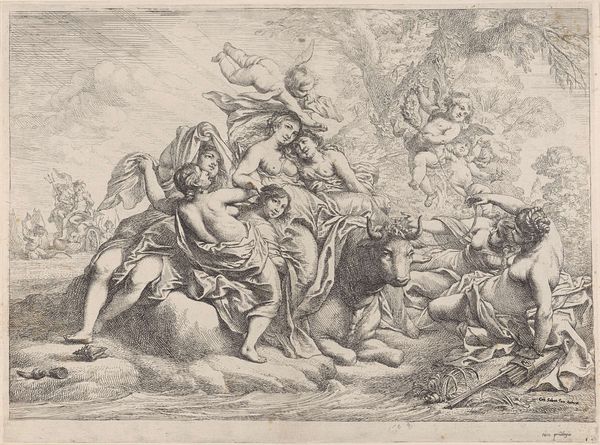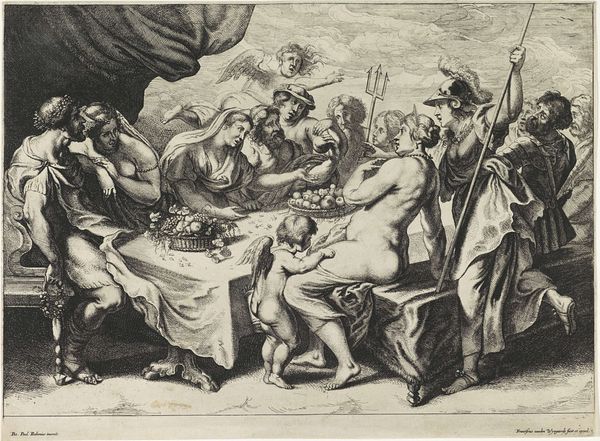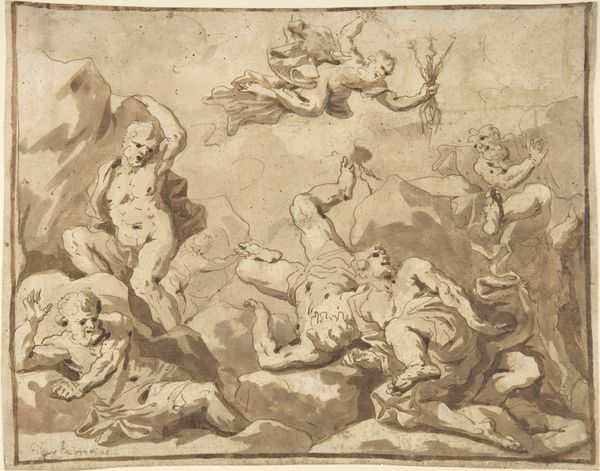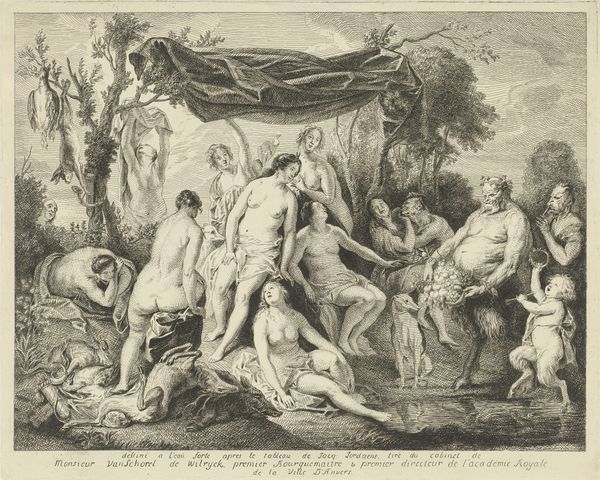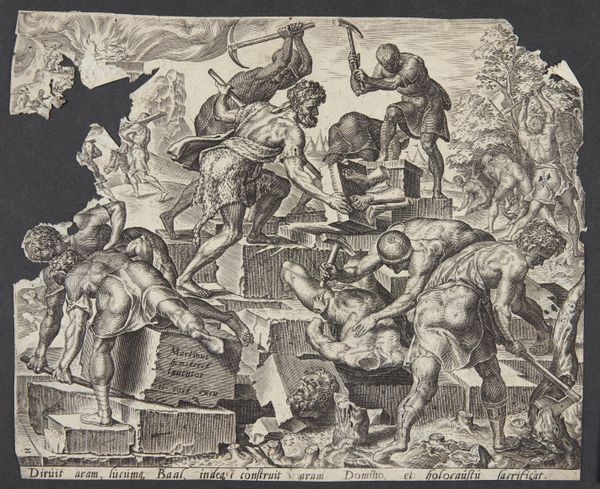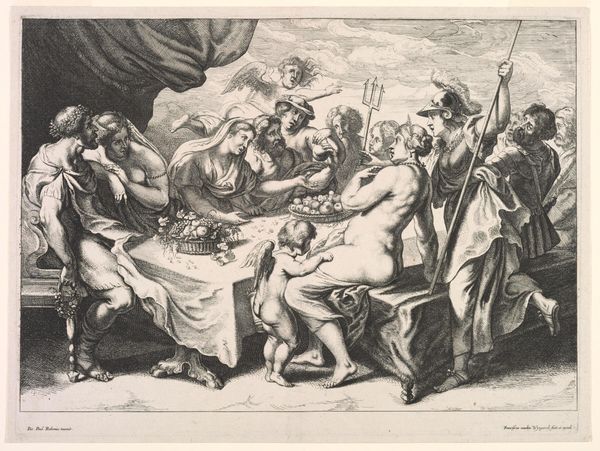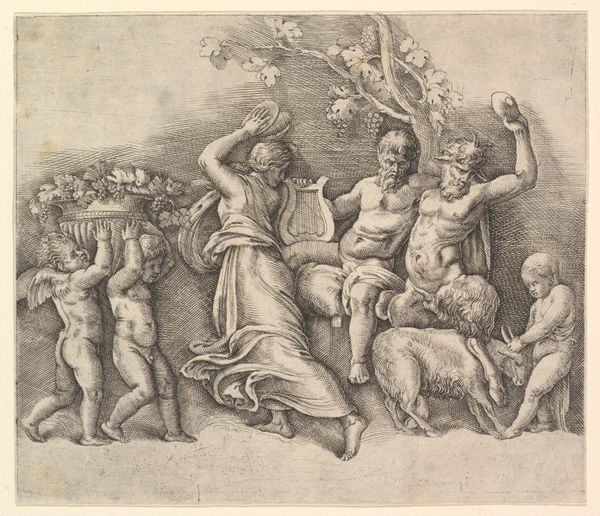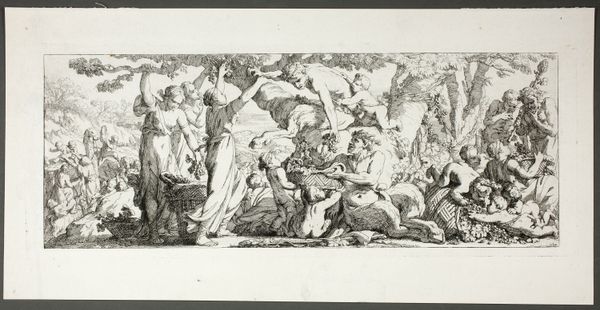
The Deification of Aeneas by Nymphs and Cupids c. 1645
0:00
0:00
drawing, print, etching
#
drawing
#
baroque
# print
#
etching
#
figuration
#
pencil drawing
#
history-painting
Dimensions: 316 × 412 mm (image); 318 × 416 mm (sheet, trimmed within platemark)
Copyright: Public Domain
Editor: Here we have "The Deification of Aeneas by Nymphs and Cupids," an etching made around 1645 by Daniel van den Dyck. I’m struck by the incredibly fine detail, especially given it's a print. What aspects of this piece draw your attention? Curator: Look at the labor involved in producing such a detailed etching. Each line, each gradated tone, meticulously carved into the plate. And consider who this was for: likely an elite audience, consuming imagery of power and classical narratives that reinforced their status. Editor: That's interesting, I was focused on the mythological aspect, but thinking about who would commission and view this makes a big difference. Curator: Exactly! Think about the materials, too: the copper plate, the ink, the paper. These weren't readily available to everyone. They speak to a network of trade and craftsmanship. Does the mass reproduction of images like this democratize them, or does it enhance their value? Editor: I guess it depends on how many copies were made and how widely they were distributed. But if only wealthy patrons can purchase, say, 20 out of the existing 50, the social implications of distribution are profoundly uneven! Curator: Precisely! This etching, at its core, is about the material conditions of its creation and consumption. The deification of Aeneas becomes secondary to the deification of the patron through this display of wealth and artistic skill. We should ask who were the hands behind this image? Whose labor made this image possible? Editor: It’s amazing to realize how much context is embedded within these materials and production techniques. Now when I look at etchings I will always think about the artist's hands but also the labor conditions behind that process! Curator: Indeed! Focusing on the materials and the means of production opens up a whole new way of seeing art.
Comments
No comments
Be the first to comment and join the conversation on the ultimate creative platform.
